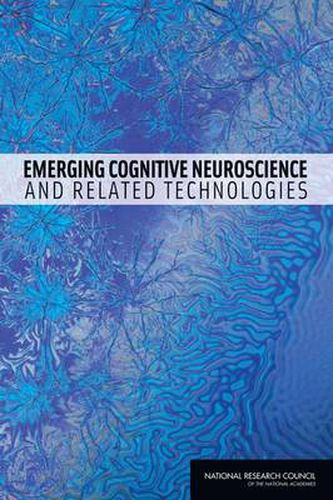Readings Newsletter
Become a Readings Member to make your shopping experience even easier.
Sign in or sign up for free!
You’re not far away from qualifying for FREE standard shipping within Australia
You’ve qualified for FREE standard shipping within Australia
The cart is loading…






Emerging Cognitive Neuroscience and Related Technologies, from the National Research Council, identifies and explores several specific research areas that have implications for U.S. national security, and should therefore be monitored consistently by the intelligence community. These areas include:
neurophysiological advances in detecting and measuring indicators of psychological states and intentions of individuals the development of drugs or technologies that can alter human physical or cognitive abilities advances in real-time brain imaging breakthroughs in high-performance computing and neuronal modeling that could allow researchers to develop systems which mimic functions of the human brain, particularly the ability to organize disparate forms of data.
As these fields continue to grow, it will be imperative that the intelligence community be able to identify scientific advances relevant to national security when they occur. To do so will require adequate funding, intelligence analysts with advanced training in science and technology, and increased collaboration with the scientific community, particularly academia.
A key tool for the intelligence community, this book will also be a useful resource for the health industry, the military, and others with a vested interest in technologies such as brain imaging and cognitive or physical enhancers.
$9.00 standard shipping within Australia
FREE standard shipping within Australia for orders over $100.00
Express & International shipping calculated at checkout
Emerging Cognitive Neuroscience and Related Technologies, from the National Research Council, identifies and explores several specific research areas that have implications for U.S. national security, and should therefore be monitored consistently by the intelligence community. These areas include:
neurophysiological advances in detecting and measuring indicators of psychological states and intentions of individuals the development of drugs or technologies that can alter human physical or cognitive abilities advances in real-time brain imaging breakthroughs in high-performance computing and neuronal modeling that could allow researchers to develop systems which mimic functions of the human brain, particularly the ability to organize disparate forms of data.
As these fields continue to grow, it will be imperative that the intelligence community be able to identify scientific advances relevant to national security when they occur. To do so will require adequate funding, intelligence analysts with advanced training in science and technology, and increased collaboration with the scientific community, particularly academia.
A key tool for the intelligence community, this book will also be a useful resource for the health industry, the military, and others with a vested interest in technologies such as brain imaging and cognitive or physical enhancers.